News in Research
Check out our research in the news!

How Electrolytes Could Fuel Computing, Not Just Athletes
Jun 5, 2025
Prof. Olvera de la Cruz, E. Kirkinis, and A. Shrestha found that placing specific ions and electric charge along the wall of a narrow channel creates a one-way flow of liquid inside it, without needing any external force. While mimicking how the body moves signals, this new method works differently from current approaches that rely on complex shapes or applied electric fields to move the liquid.
Read more: Northwestern McCormick School of Engineering News
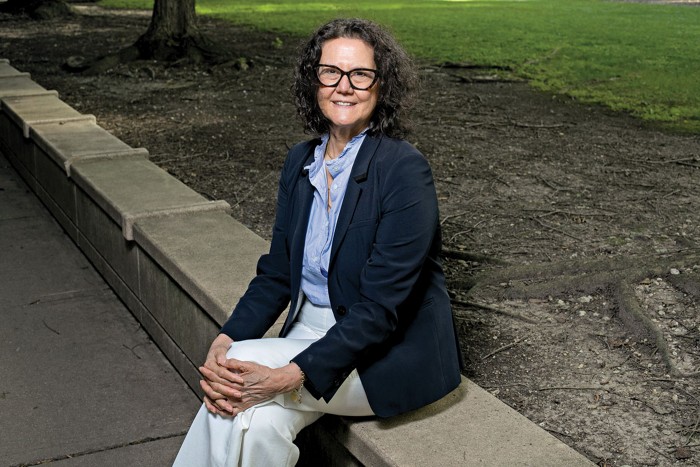
Interview by Chemical & Engineering News
Sep 20, 2024
Prof. Olvera was interviewed by Chemical & Engineering News as part of their Trailblazers series for an issue on Latin American chemists and engineers. She spoke about her academic roots and scientific interests.
Read the article here: Chemical & Engineering News
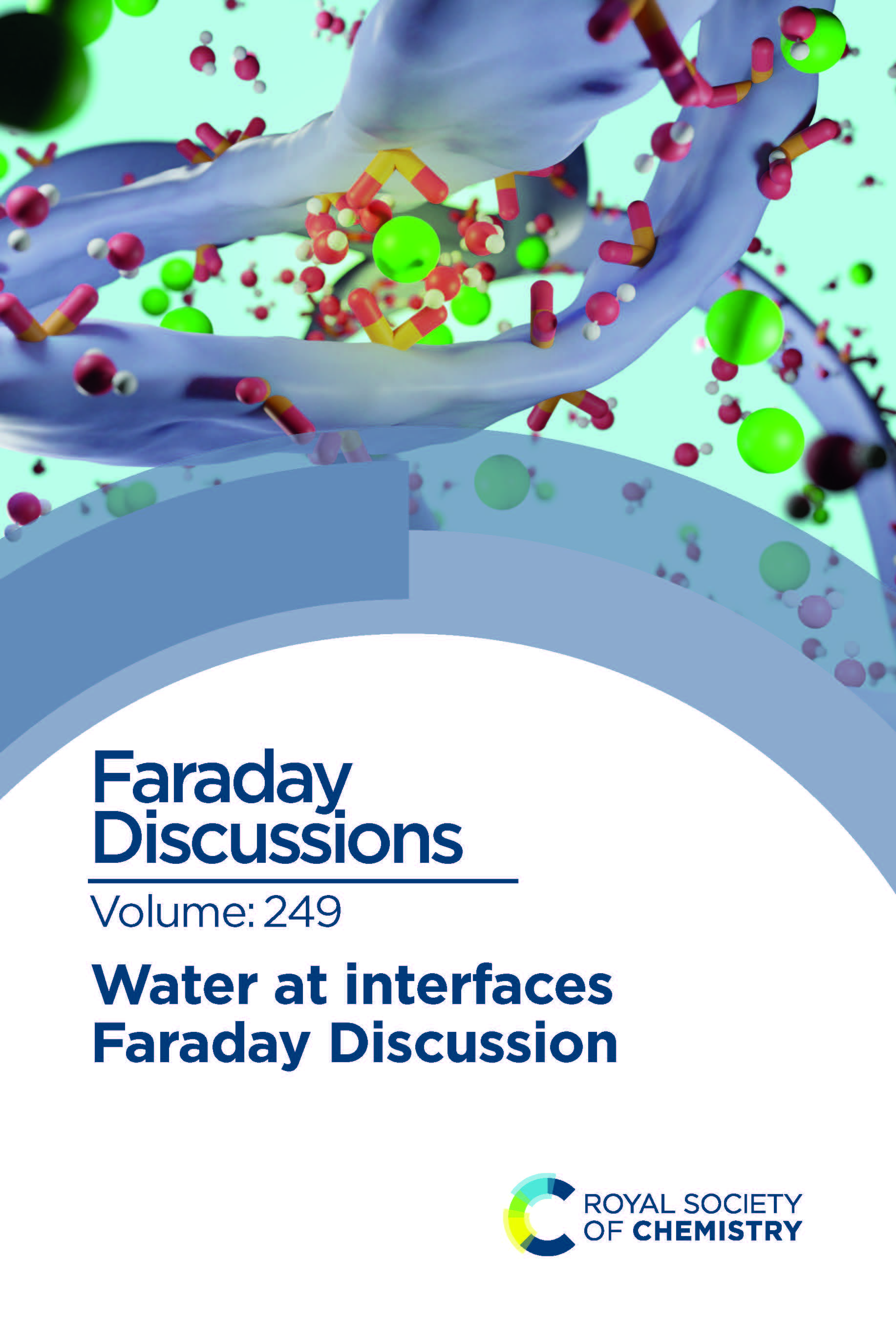
Roger Reinertsen's Faraday Discussions Cover Art on colloidal crystals
Feb 6, 2024
In collaboration with the Bedzyk group, the Olvera de la Cruz group dived into the transformations in crystals of DNA-functionalized nanoparticles by electrolytes. In this study, they looked into the assembly of DNA-grafted gold nanoparticles immersed in concentrated electrolyte solutions, and through this, gained insight into salting out of colloids.
Read the paper here: Faraday Discussions

Controlling the shape of chiral molecules
August 16, 2022
The work of the Olvera de la Cruz group and the Bedzyk group on chirality was featured in the news. They dive into the analysis of how organizing molecules into bigger units has implications in drug delivery and nanoelectronics.
Read more at: Northwestern News
See also: [MRS Bulletin Interview]
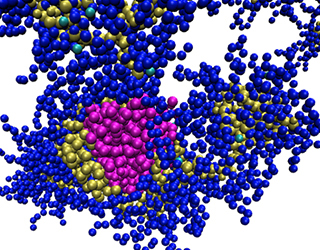
Upcycling polyester could reduce plastic waste
March 21, 2022
Building polymers capable of encapsulating the enzyme to protect its structure will allow it to function outside of the living cell.
See more: Northwestern News

New research institute will utilize cell-free systems for global needs
March 28, 2022
Northwestern University and the U.S. Army collaborate to develop point-of-need products. They've created a new basic science research institute, the Cell-Free Biomanufacturing Institute, to accelerate synthetic biology technology development.
See more: Northwestern News

Microparticles show ability to turn in reverse, paving the way for microfluidic devices
February 22, 2022
In collaboration with the Argonne National Laboratory (ANL), researchers have found a way to systematically reverse vortices of particles using electric fields.
See more: Argonne National Laboratory Press Release
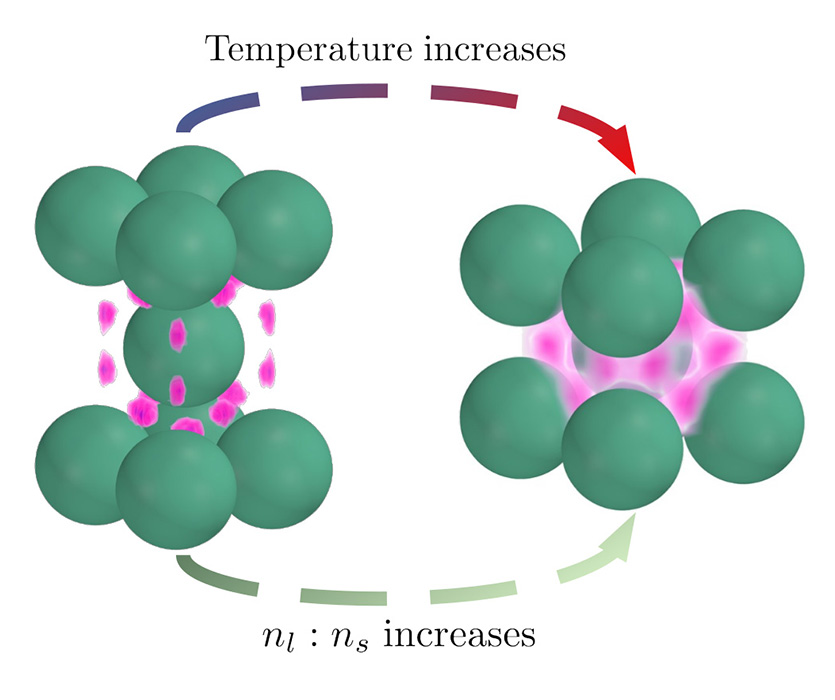
How understanding metallization of materials could help the development of superionic materials for safe, efficient batteries
November 29, 2021
Led by Monica Olvera de la Cruz, a team of McCormick School of Engineering researchers observed a classical system that exhibits a transition between insulating and conducting states. The group hopes this will accelerate the development of safe solid-state batteries, with the usage of metallizable colloidal crystals for future prototypes.
See more: Northwestern News

Microspheres quiver when shocked
June 24, 2021
The Olvera de la Cruz group, working with the Bishop's group at Columbia University, report that they have demonstrated the use of DC electric fields to drive back-and-forth rotation of micro-particles in electric boundary layers. These particle oscillators could be useful as clocks that coordinate the organization of active matter and even, perhaps, orchestrate the functions of micron-scale robots.
See more: Northwestern News
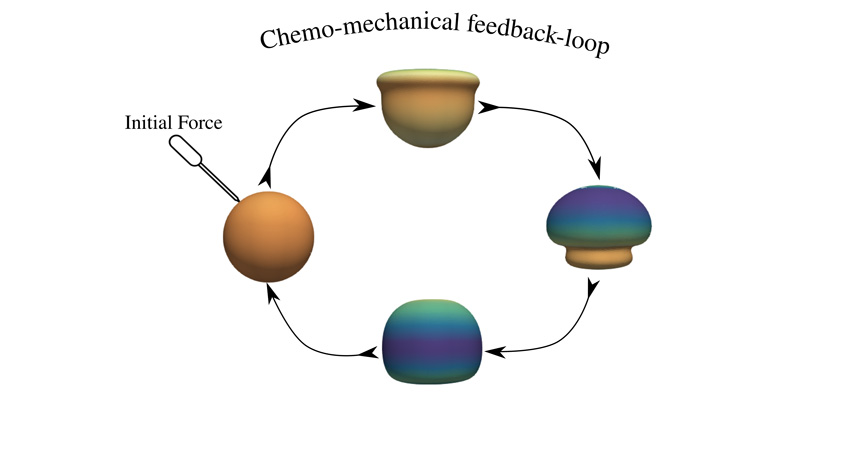
Designing soft materials that mimic biological functions
May 10, 2021
Northwestern Engineering researchers have developed a theoretical model to design soft materials that demonstrate autonomous oscillating properties that mimic biological functions. The work could advance the design of responsive materials used to deliver therapeutics as well as for robot-like soft materials that operate autonomously.
See more: Northwestern News

Mimicking shapes found in bacteria
May 10, 2021
In a new study, Northwestern University researchers have, for the first time, theoretically and experimentally controlled protein assembly to build these microcompartments into different shapes and sizes, including long tubes and polyhedra. Not only does this work illuminate how biological units, such as viruses and organelles, develop, it also could inform new ways to design medicine, synthetic cells and nanoreactors.
See more: Northwestern News
Aquatic robot inspired by sea creatures walks, rolls, transports cargo
December 10, 2020
A research team of NU researchers including the Olvera de la Cruz group have developed a first-of-its-kind life-like material that acts as a soft robot. It can walk at human speed, pick up and transport cargo to a new location, climb up hills and even break-dance to release a particle.
See more: Northwestern News
A new understanding of ionic interactions with graphene and water
November 18, 2020
A research team led by the Olvera de la Cruz group and Argonne National Laboratory researchers have uncovered new findings into the role of ionic interaction within graphene and water. The insights could inform the design of new energy-efficient electrodes for batteries or provide the backbone ionic materials for neuromorphic computing applications.
See more: Northwestern News
'Like a fishing net', nanonet collapses to trap drug molecules
October 6, 2020
The Olvera de la Cruz group and their Northwestern collaborators have discovered a new, rapid method for fabricating nanoparticles from a simple, self-assembling polymer. The novel method presents new possibilities for diverse applications, including water purification, diagnostics and rapidly generating vaccine formulations, which typically require many different types of molecules to be either captured or delivered at the same time.
See more: Northwestern News
Research exposes new vulnerability in SARS-CoV-2
August 17, 2020
Monica Olvera de la Cruz and Baofu Qiao have uncovered a new vulnerability in the novel coronavirus’ infamous spike protein — illuminating a relatively simple, potential treatment pathway.
See more: Northwestern News
New discovery makes it easier to design synthetic proteins that rival their natural counterparts
January 9, 2020
A multi-institutional research team including Northwestern Engineering’s Monica Olvera de la Cruz has created a synthetic material that is as effective as naturally occurring proteins in transporting molecules through membranes, a major milestone that could transform such fields as medicine, life sciences, alternative energy, and environmental science.
See more: Northwestern News
From ribbon to scroll: gaining shape control by electrostatics
November 19, 2019
In a paper published in PNAS, a team led by Prof. Olvera de la Cruz and Prof. Bedzyk uncovered new insights into how electrostatic interactions can be regulated to attain and control scroll-like cochleate structures, which could inform how to capture and release macromolecules in a size-selective manner as part of future drug-delivery strategies.
See more: Northwestern News
New paper published in Science
June 20, 2019
The article "Particle analogs of electrons in colloidal crystals" by Martin Girard, Shunzhi Wang, Jingshan S. Du, Anindita Das, Ziyin Huang, Vinayak P. Dravid, Byeongdu Lee, Chad A. Mirkin and Monica Olvera de la Cruz, describes the discovery that nanoparticles engineered with DNA in colloidal crystals—when extremely small—behave just like electrons
See the article here: Science
Researchers find enzymes naturally select their own polymer sequences
July 25, 2018
As free-flowing enzymes travel amid a sea of polymers, a team led by Prof. Olvera de la Cruz has found those enzymes prefer to join certain polymer sequences over others, a discovery that could lead to applications in a diverse array of fields ranging from nuclear waste processing to drug delivery. Authored by Olvera de la Cruz and two colleagues in McCormick’s Department of Materials Science and Engineering — senior research associate Trung Dac Nguyen and research assistant professor Baofu Qiao — the study, titled “Efficient encapsulation of proteins with random copolymers,” was published, June 11, in the Proceedings of the National Academy of Sciences.
See more: Northwestern News
Researchers find a way to keep proteins functioning outside of the cell
March 28, 2018
A team of researchers from the Olvera de la Cruz group and the University of California at Berkeley have discovered a way to keep proteins active outside of a cell. The discovery could lead to a new class of materials with functions found only in living systems.
Read the article here: Science
Understanding rare earth emulsions
November 2, 2017
In a paper published in Physical Review Letters, Olvera de la Cruz and her team used a computational approach to gain a better understanding of emulsions. This research can be applied to separating rare earths as well as other elements, including the removal of radioactive metals and nuclear waste. This work was highlighted on the Department of Defense University Research page.
See more: Northwestern News
Breaking the protein-DNA bond
April 4, 2017
An interdisciplinary team featuring Prof. Olvera de la Cruz and Prof. John Marko has found that protein-DNA bonds can be broken by unbound proteins. This discovery sheds light on how molecules self-organize and how gene expression is dynamically controlled.
See more: Northwestern News
Designing ion "highway systems" for batteries
June 9, 2014
For years, scientists have searched for safer battery materials that still have the same advantages as lithium. While plastics (or polymers) seemed like an obvious choice, researchers never fully understood how the material would change when an ion charge was introduced. Now a McCormick team, lead by Monica Olvera de la Cruz has married two traditional theories in materials science that can explain how the charge dictates the structure of the material. This opens the door for many applications, including a new class of batteries. The paper, Electrostatic control of Block Copolymer Morphology, was published in Nature Materials.
See more: Northwestern News
Read the paper here: Nature Materials
Expanding particles to engineer defects
April 11, 2014
Materials scientists have long known that introducing defects into three-dimensional materials can improve their mechanical and electronic properties. Now a new Northwestern study by researchers Zhenwei Yao and Monica Olvera de la Cruz finds how defects affect two-dimensional crystalline structures, and the results hold information for designing new materials.
See more: Northwestern News
Read the article here: PNAS
Making a gem of a tiny crystal
November 27, 2013
Nature builds flawless diamonds, sapphires, and other gems. Now, an interdisciplinary team of Northwestern University researchers Evelyn Auyeung, Ting I.N.G. Li, Andrew J. Senesi, Abrin L. Schmucker, Bridget C. Papls, Monica Olvera de la Cruz and Chad A. Mirkin are the first to build near-perfect single crystals out of nanoparticles and DNA using the same structure favored by nature.
See more: Northwestern News
Read the article here: Nature
Study: Acidity can change cell membrane properties
October 3, 2013
An interdisciplinary team of Northwestern University researchers Cheuk-Yui Leung, Liam Palmer, Sumit Kewalramani, Baofu Qiao, Samuel Stupp, Monica Olvera de la Cruz and Michael J. Bedzyk has determined how to control bilayers’ crystallization by altering the acidity of their surroundings. Understanding and controlling bilayers’ properties is vital for advances in biology and biotechnology.
See more: Northwestern News
Read the article here: PNAS
In the fight against cancer, a closer look at nuclear blebbing
February 18, 2013
Monica Olvera de la Cruz, Chloe Funkhouser, and Rastko Sknepnek, together with Takeshi Shimi, Anne E. Goldman and Robert D. Goldman of the Department of Cell and Molecular Biology, developed a mathematical model that sheds light on the defects observed in misshapen cell nuclei by clarifying the mechanisms that cause bulges known as blebs in cells' nuclear membranes.
See more: Northwestern News
Read the article here: PNAS
New geometries: Researchers create new shapes of artificial microcompartments
December 13, 2012
Monica Olvera de la Cruz, Michael Bedzyk, and Samuel Stupp, with team members including lead co-authors Cheuk-Yui Leung, Liam C. Palmer, and Bao Fu Qiao; Sumit Kewalramani, Rastko Sknepnek, Christina J. Newcomb, and Megan A. Greenfield, all of Northwestern; and Graziano Vernizzi of Siena College, developed a method to regulate the shape of crystalline nano-containers by altering the acidity of their surroundings. The findings could lead to designed microreactors that mimic the functions of naturally occuring cell containers or deliver therapeutic materials to cells at specific targeted locations.
See more: Northwestern News
Read the article here: ACS Nano
Outside a vacuum: Model predicts movement of charged particles in complex media
November 27, 2012
Vikram Jadhao, Francisco Solis and Monica Olvera de la Cruz published a paper describing a model that can predict the reactions of charged particles in any media. Their computational discovery, which takes cues from nature, could find applications in biology, medicine, and synthetic materials research.
See more: Northwestern News
Read the article here: Physical Review Letters